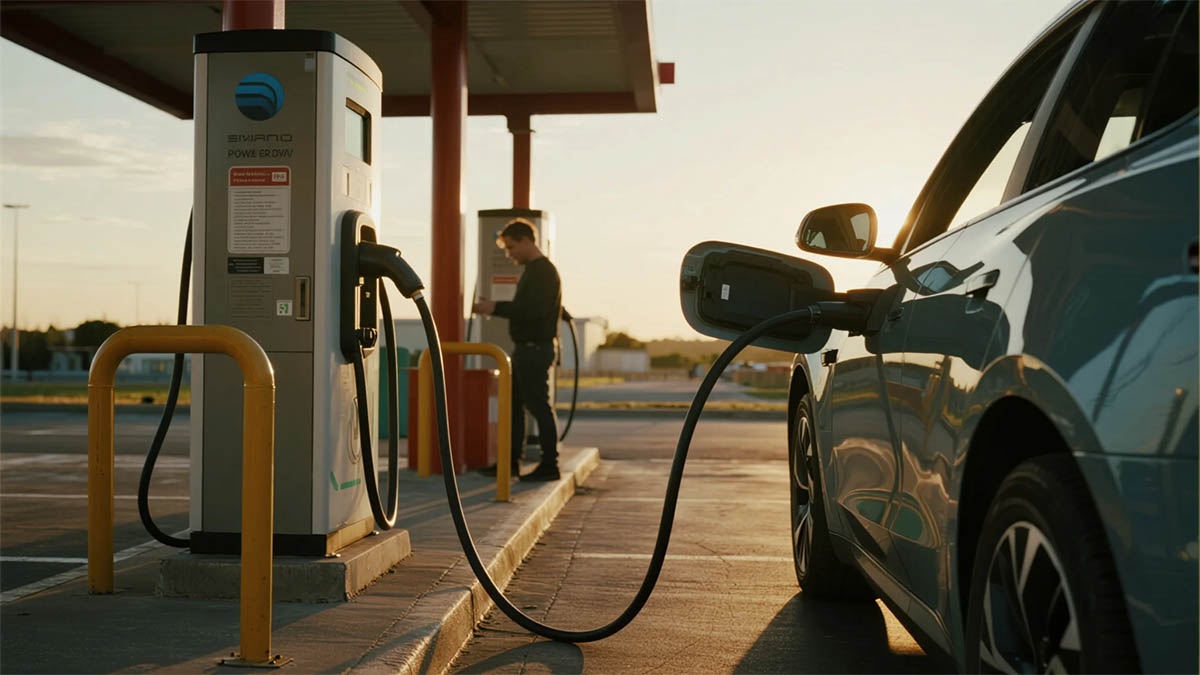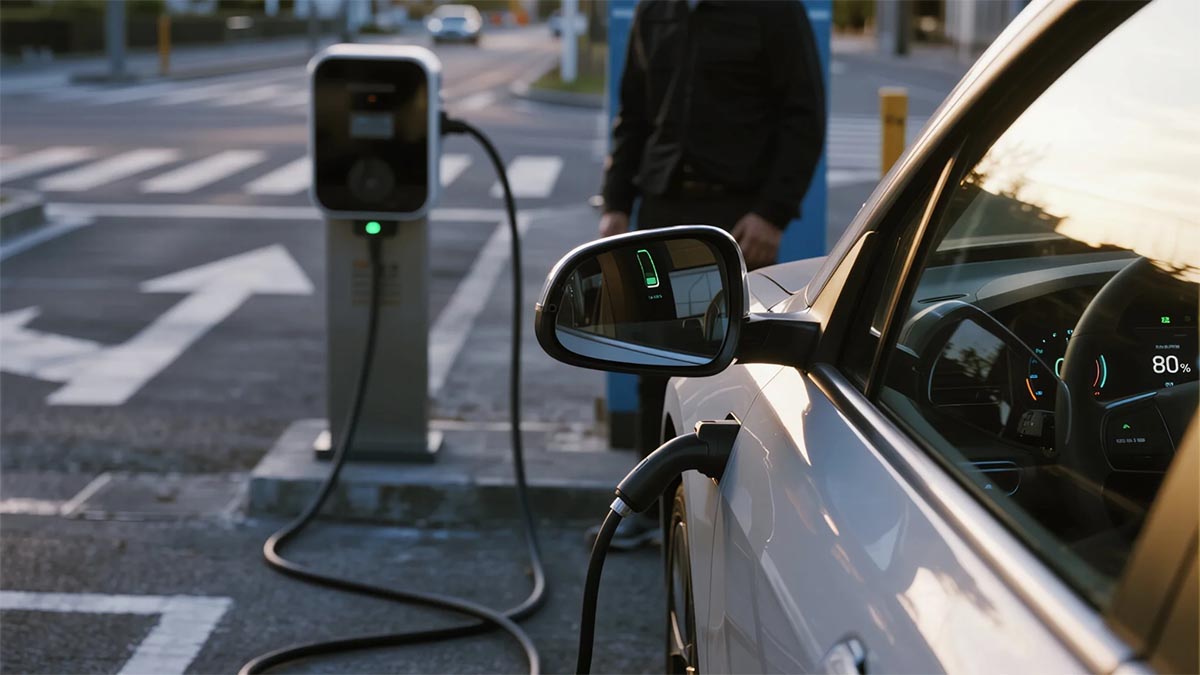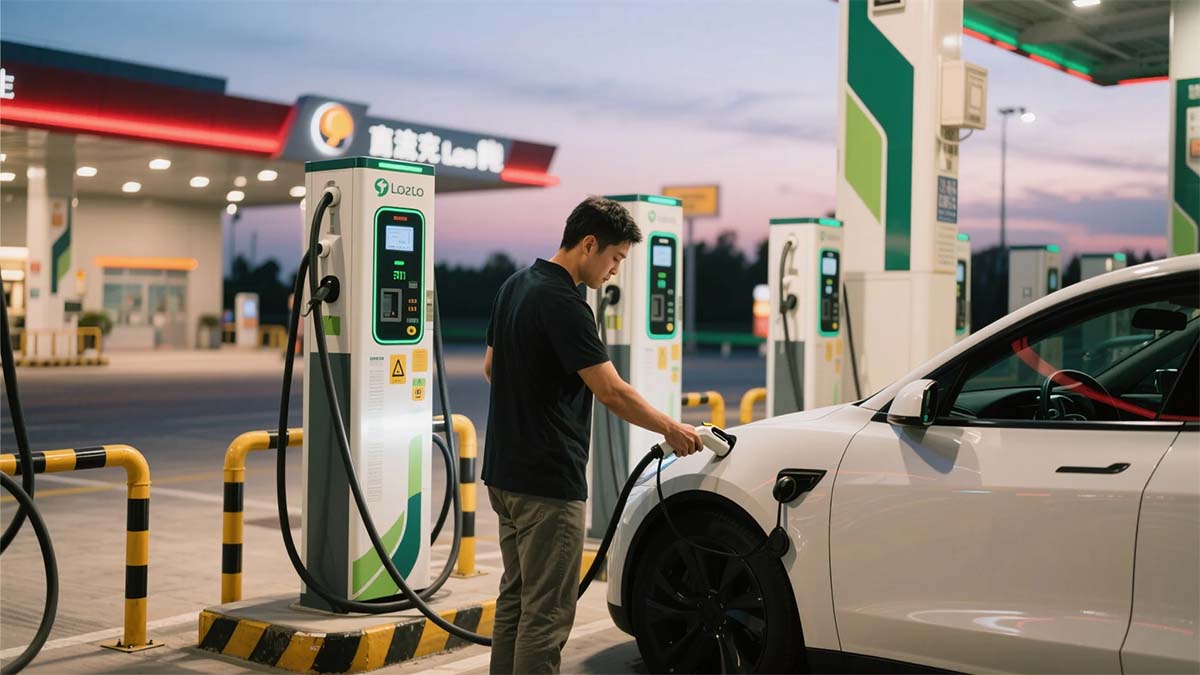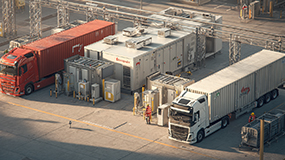 Why High-Power CCS2 Sites Move to Liquid-Cooled Connectors
Why High-Power CCS2 Sites Move to Liquid-Cooled Connectors
Sep 22, 2025
High current changes everything. Once a CCS2 site aims beyond the mid-300-amp range for long stretches, heat, cable weight, and driver ergonomics become the real constraints. Liquid-cooled connectors move heat out of the contact and cable core so the handle stays usable and power stays up. This guide explains when the switch makes sense, what to look for in the hardware, and how to run it with low downtime.
What really breaks at high current– I²R loss drives temperature at contacts and along the conductor.– Thicker copper reduces resistance but makes the cable heavy and stiff.– Ambient heat and back-to-back sessions stack; afternoon queues push shells past limits.– When the connector overheats, the controller derates; sessions stretch and bays back up.
Where natural cooling still winsNaturally cooled handles work well for moderate power and cooler climates. They avoid pumps and coolant. Service is simpler and spares are cheaper. The trade-off is sustained current in hot seasons or under heavy duty.
How liquid cooling solves the problemA liquid-cooled CCS2 connector routes coolant close to the contact set and through the cable core. Heat leaves the copper, not the driver’s hand. Typical assemblies add temperature sensing on power pins and in the cable, plus flow/pressure monitoring and leak detection tied to safe shutdown.
Decision matrix: when to move to liquid-cooled CCS2
Target current (continuous)
Typical use case
Cable handling & ergonomics
Thermal margin across the day
Cooling choice
≤250 A
Urban fast chargers, low dwell
Light, easy
High in most climates
Natural
250–350 A
Mixed traffic, moderate turnover
Manageable but thicker
Medium; watch hot seasons
Natural or Liquid (depends on climate/duty)
350–450 A
Highway hubs, long dwell, hot summers
Heavy if natural; fatigue rises
Low without cooling; early derating
Liquid-cooled
≥500 A
Flagship bays, fleet lanes, peak events
Needs slim, flexible cable
Requires active heat removal
Liquid-cooled
Workersbee CCS2 liquid-cooled at a glance– Current classes: 300 A / 400 A / 500 A continuous, up to 1000 V DC.– Temperature rise target: < 50 K at the terminal under stated test conditions.– Cooling loop: typical 1.5–3.0 L/min flow at about 3.5–8 bar; around 2.5 L coolant for a 5 m cable.– Heat extraction reference: about 170 W @300 A, 255 W @400 A, 374 W @500 A (published data supports engineering of higher-amp scenarios).– Environmental: IP55 sealing; operating range −30 °C to +50 °C; acoustic output at the handle under 60 dB.– Mechanics: mating force under 100 N; mechanism tested for more than 10,000 cycles.– Materials: silver-plated copper terminals; durable thermoplastic housings and TPU cable.– Compliance: designed for CCS2 EVSE systems and IEC 62196-3 requirements; TÜV/CE.– Warranty: 24 months; OEM/ODM options and common cable lengths available.
Why drivers and operators feel the difference– Slimmer outer diameter and lower bend resistance improve reach to ports on SUVs, vans, and trucks.– Cooler shell temperatures reduce re-plugs and failed starts.– Extra thermal headroom keeps set power flatter during afternoon peaks.
Reliability and service, kept simpleLiquid cooling adds pumps, seals, and sensors, but design choices keep downtime low. Workersbee focuses on field-swappable wear parts (seals, trigger modules, protective boots), accessible temperature and coolant sensors, clear leak-before-break paths, and documented torque steps. Techs can work quickly without pulling the whole harness. A two-year warranty and >10k mating-cycle design align with public-site duty.
Commissioning notes for high-power bays
Commission the hottest bay first. Map contact and cable-core sensors; calibrate offsets.
Stage holds at 200 A, 300 A, and target current; record ΔT from ambient to handle shell.
Set current-versus-coolant curves and boost windows in the controller; enable graceful taper.
Monitor three numbers: contact temperature, cable inlet temperature, and flow.
Alert policy: “yellow” for drift (rising ΔT at the same current), “red” for no-flow, leak, or over-temp.
On-site kit: pre-filled coolant pack, O-rings, trigger module, sensor pair, torque sheet.
Weekly review: plot power hold time vs ambient; rotate bays if one lane heats earliest.
Buyer scorecard for CCS2 liquid-cooled connectors
Attribute
Why it matters
What good looks like
Continuous current rating
Drives session time
Holds target amps for an hour in hot weather
Boost behavior
Peaks need control and recovery
Stated boost time plus auto-recovery window
Cable diameter & mass
Ergonomics and reach
Slim, flexible, true one-hand plug-in
Temperature sensing
Protects contacts and plastics
Sensors on pins and in cable core
Coolant monitoring
Safety and uptime
Flow + pressure + leak detect + interlocks
Serviceability
Mean time to repair
Swap seals, triggers, and sensors in minutes
Environmental sealing
Weather and washdowns
IP55 class with tested drain paths
Documentation
Field speed and repeatability
Illustrated torque steps and spares list
Thermal reality checkTwo conditions stress even good hardware: high ambient temperature and high duty cycle. Without liquid cooling, the controller must derate earlier to protect contacts. Using a liquid-cooled CCS2 handle lets the site sustain target current for longer, trimming queues and stabilizing per-bay revenue.
Human factorsDrivers judge a site by how quickly they can plug in and walk away. A stiff cable or hot shell slows them down and raises error rates. Slim, liquid-cooled cables make ports easier to reach and allow a natural, comfortable plug-in angle.
Compatibility and standardsThe CCS2 signaling stays the same; what changes is the heat path and the monitoring. Build acceptance around temperature rise, shell temperature, and fault handling. Keep per-bay records of current, ambient, contact temperature, and taper points to support audits and seasonal tuning.
Cost of ownership, not just CapExFrequent derating costs more in longer sessions and walk-offs than it saves on hardware. Factor session time at your top ambient bins, tech time for common swaps, consumables (coolant, filters if used), and unplanned downtime hours per quarter. For high-duty hubs, liquid-cooled connectors win on throughput and predictability.
Where Workersbee fits
Workersbee’s liquid-cooled CCS2 handle is built for steady high current and easy upkeep, with field-accessible sensors, quick-swap seals, a quiet grip, and clear torque steps for technicians. Integration notes cover flow (1.5–3.0 L/min), pressure (about 3.5–8 bar), power draw under 160 W for the cooling loop, and typical coolant volume per cable length. This helps sites bring flagship bays online quickly and hold power in hot seasons without moving to bulky cables.
FAQ
At what current should I consider liquid cooling?When your plan calls for sustained current in the upper-300-amp range or higher, or when your climate and duty cycle push shell temperatures up.
Is liquid cooling hard to maintain?It adds parts, but good designs make the usual swaps quick. Keep a small kit on site and log thresholds.
Will drivers notice the difference?Yes. Slimmer cables and cooler handles make plug-ins faster and reduce mis-starts.
Can I mix bays?Yes. Many sites run a few liquid-cooled lanes for heavy traffic and keep naturally cooled lanes for moderate demand.
Read More

 Why High-Power CCS2 Sites Move to Liquid-Cooled Connectors
Why High-Power CCS2 Sites Move to Liquid-Cooled Connectors
 Why EV Charging Slows After 80%
Why EV Charging Slows After 80%
 How to Improve EV Charging Speed (2025 Guide)
How to Improve EV Charging Speed (2025 Guide)
 2025 Megawatt Charging System (MCS) Guide for Heavy-Duty EVs
2025 Megawatt Charging System (MCS) Guide for Heavy-Duty EVs